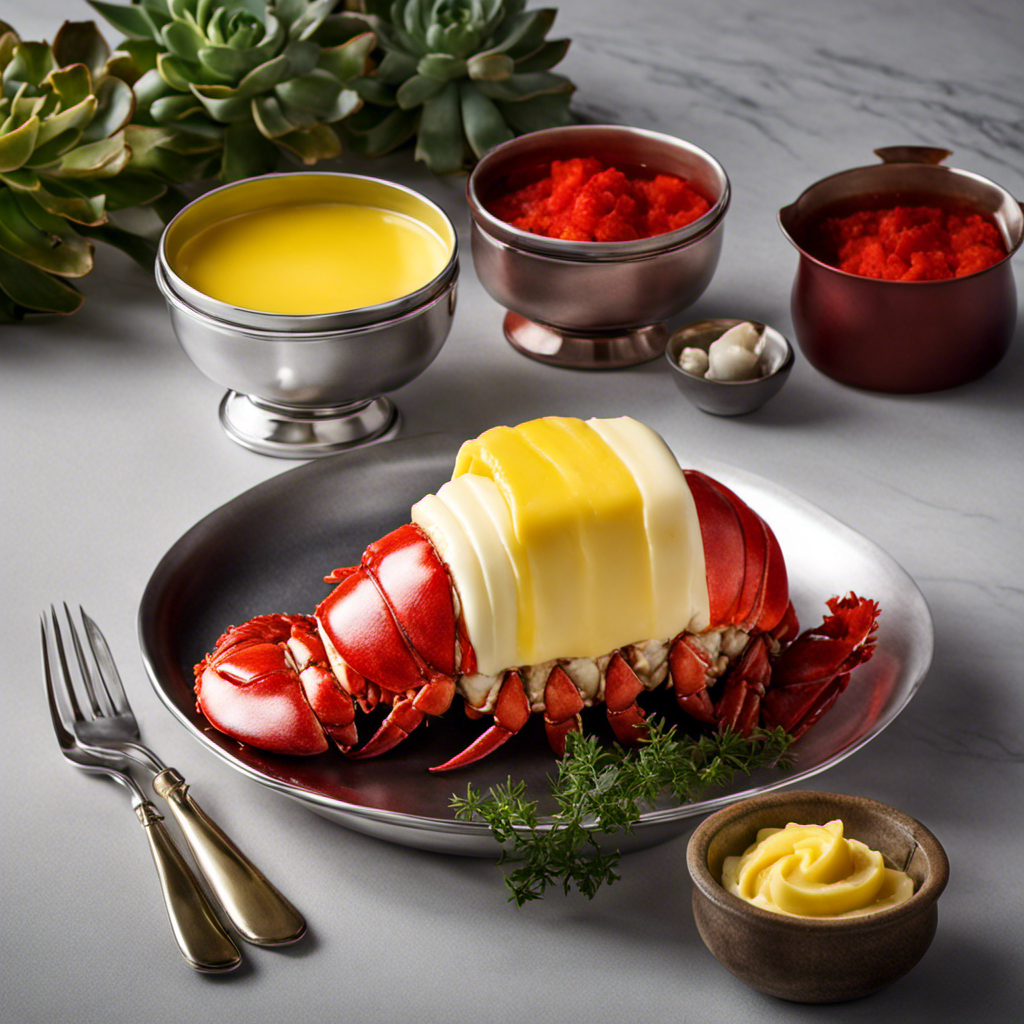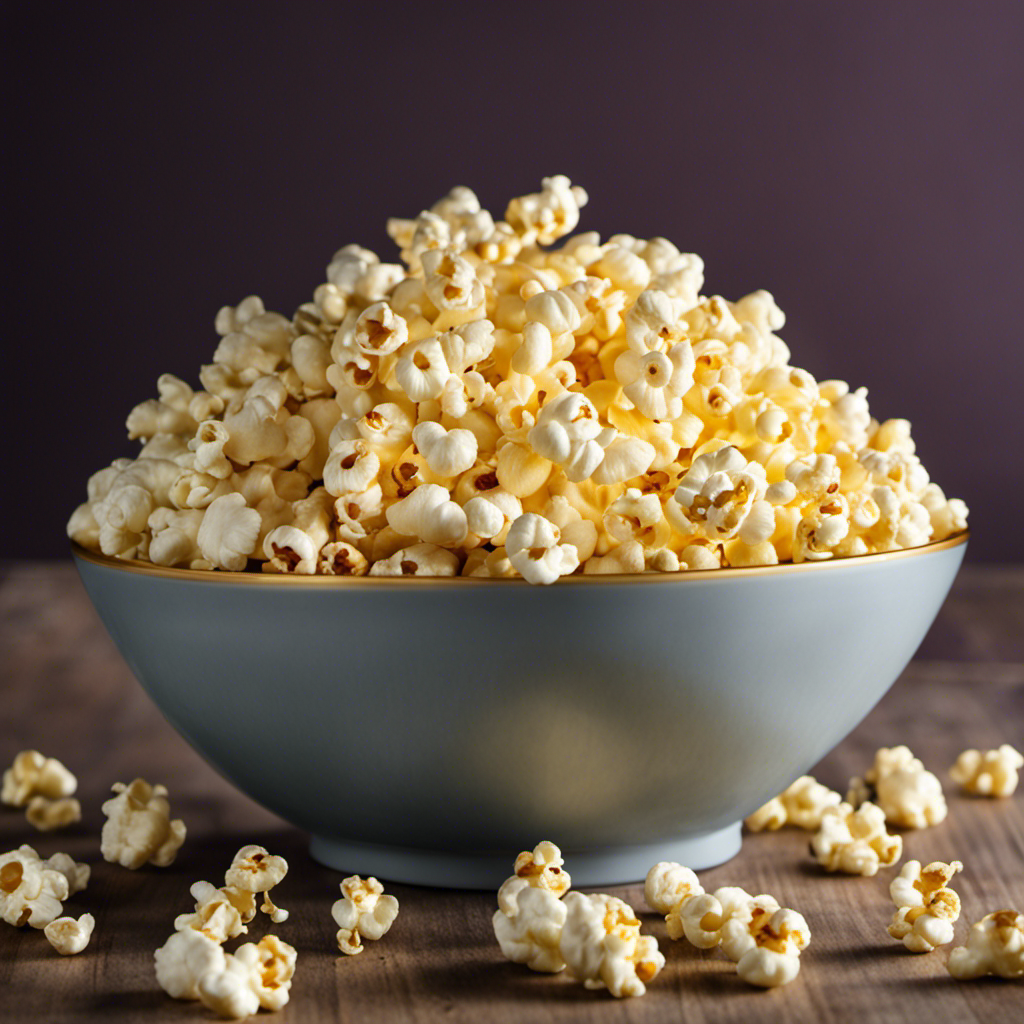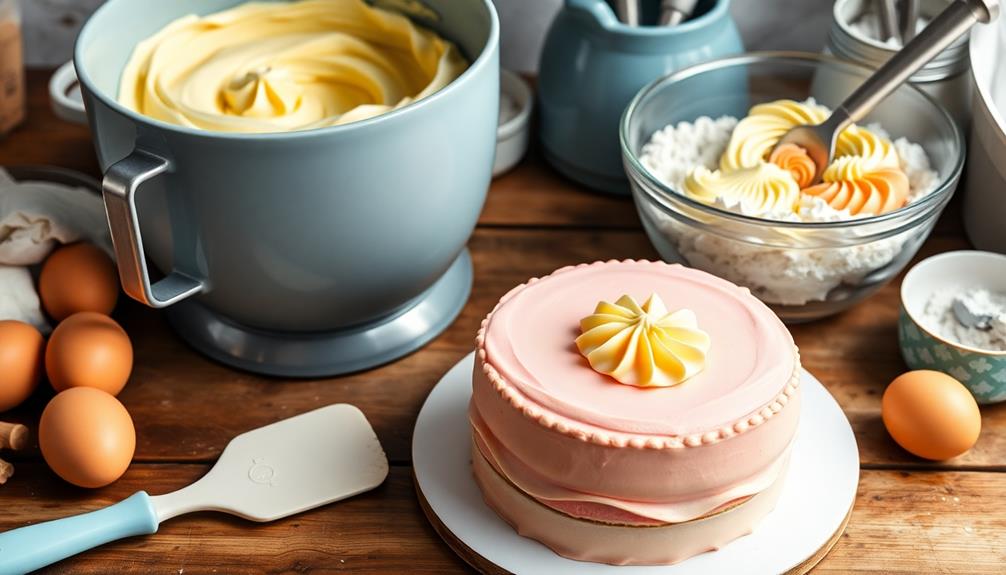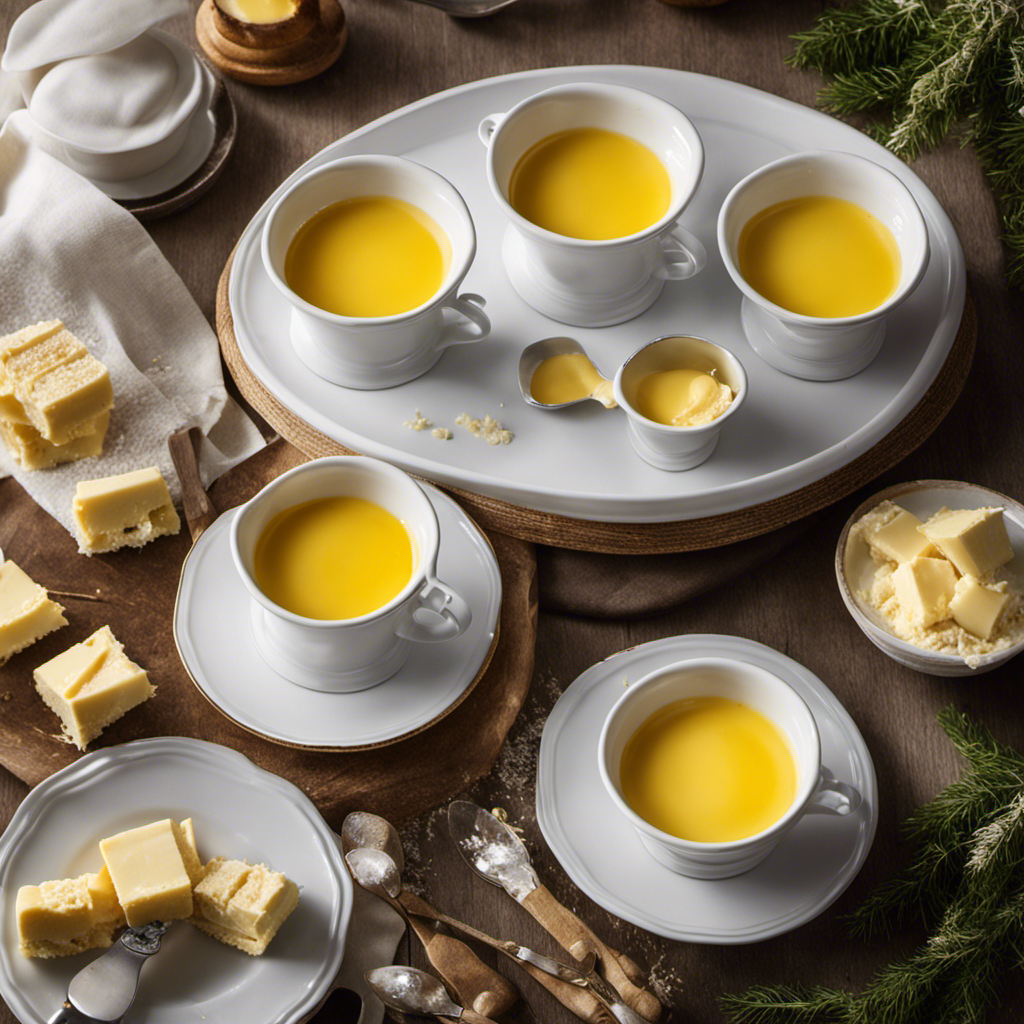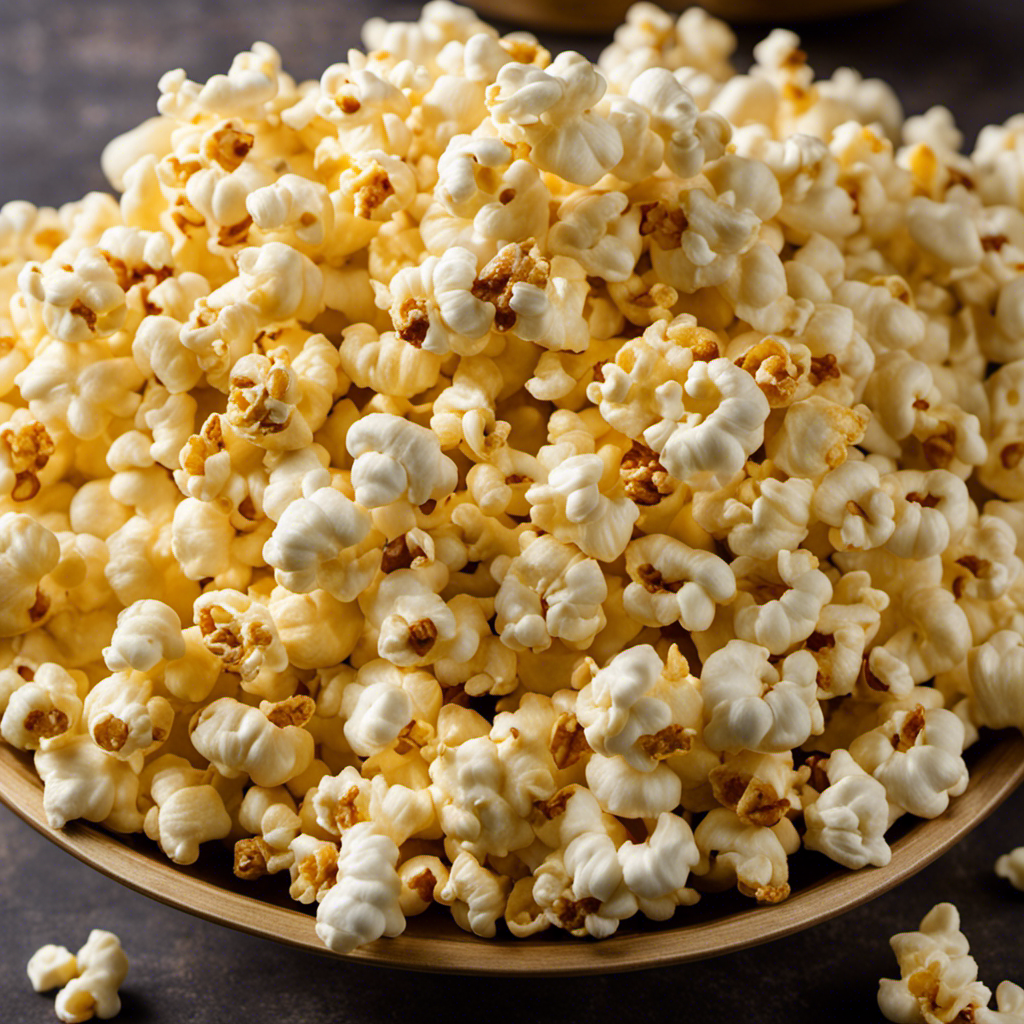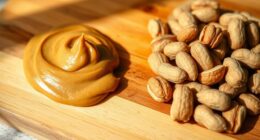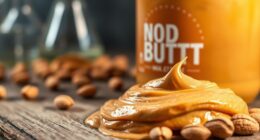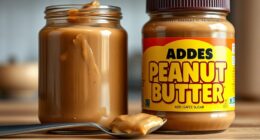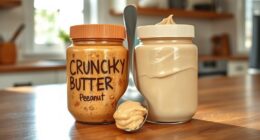Envision biting into a juicy lobster tail, so supple that it almost dissolves on your tongue. Through this guide, we’re going to show you the technique of butter poaching, an approach that soaks the lobster in deep flavor and gives it a sumptuous texture.
With our step-by-step instructions, you’ll learn how to select the perfect lobster tail, prepare the buttery poaching liquid, and master the technique of creating a truly unforgettable dish.
Get ready to elevate your culinary skills and indulge in a buttery seafood masterpiece.
Key Takeaways
- Select firm and vibrant colored lobster tails
- Trim excess shell carefully using a sharp knife
- Infuse butter with seasonings for added flavor
- Explore alternative cooking methods and flavor variations
Selecting the Perfect Lobster Tail
When selecting the perfect lobster tail, you’ll want to look for ones that are firm and have a vibrant color. A firm lobster tail indicates freshness and ensures that the meat will be tender and succulent when cooked. The color of the tail should be a vibrant shade of red or orange, indicating that the lobster was caught at the peak of its flavor.
Avoid tails that appear dull or discolored, as this could be a sign of poor quality. Additionally, consider the size of the tail – larger tails may take longer to cook, while smaller ones may be more tender.
Taking these factors into account will ensure that your lobster tail is perfect for the cooking method of your choice.
Preparing the Butter Poaching Liquid
As you’re getting ready, make sure you’ve prepared the liquid for butter poaching the lobster tail. This step is crucial in achieving the perfect flavor and tenderness. Here’s what you need to do:
-
Start by melting a generous amount of butter in a saucepan over low heat. The butter should be completely melted but not browned.
-
Add aromatic ingredients like garlic, thyme, and bay leaves to infuse the butter with their flavors. You can also experiment with other herbs and spices to create your own unique blend.
-
Pour in some white wine or seafood stock to enhance the taste and add depth to the poaching liquid. The liquid should cover the lobster tail completely.
-
Bring the mixture to a gentle simmer and let it cook for a few minutes to allow the flavors to meld together. Be careful not to let it boil, as this can toughen the lobster meat.
Preparing the Lobster Tail for Poaching
When preparing a lobster tail for poaching, there are several key points to consider.
First, you need to know how to remove the shell safely without damaging the delicate meat.
Second, mastering tail trimming techniques will ensure an elegant presentation and even cooking.
Lastly, enhancing the flavor with the right seasonings will take your poached lobster tail to the next level of deliciousness.
Removing Shell Safely
To safely remove the shell, you’ll gently crack it open and carefully peel it back. Follow these steps to avoid injury during shell removal:
-
Start by holding the lobster tail firmly in one hand, with the shell facing up.
-
Using a pair of kitchen shears, make a small cut along the top of the shell, from the base to the tip.
-
Next, use your thumbs to gently pry the shell apart, starting from the cut you made.
-
As you peel the shell back, be careful not to tear the delicate meat underneath. Slow and steady is key.
By following these techniques, you can remove the shell safely and efficiently, ensuring that the lobster meat remains intact and ready to be butter poached.
Enjoy your delicious lobster tail!
Tail Trimming Techniques
One way you can trim the tail is by using a sharp knife to carefully remove any excess shell. This will ensure that the lobster tail is clean and ready to be butter poached. When it comes to trimming tools, a sharp knife is essential. Make sure it is clean and has a sturdy handle for better control. The best trimming methods involve making precise cuts to remove any unwanted shell fragments. To help you visualize the process, here’s a handy table showcasing the steps:
| Step | Description | Tips |
|---|---|---|
| 1 | Lay the lobster tail on a cutting board | Use a non-slip surface for stability |
| 2 | Hold the tail firmly with one hand | This will prevent any accidental slips |
| 3 | Use the knife to carefully trim any excess shell | Start from the top and work your way down |
Remember to be cautious and take your time when trimming the lobster tail. Using the right tools and following the best trimming methods will ensure a delicious and visually appealing butter poached lobster tail.
Enhancing Flavor With Seasonings
Using a variety of seasonings can greatly enhance the flavor of the lobster tail. When butter poaching lobster, the seasonings you choose can make all the difference.
Here are four seasonings that will take your lobster tail to the next level:
-
Garlic and Herb: Infuse your butter with minced garlic, fresh herbs like thyme and parsley, and a squeeze of lemon juice. This combination adds a savory and fragrant note to the lobster.
-
Cajun Spice: For a bit of heat and a touch of smokiness, sprinkle your lobster tail with Cajun seasoning. The blend of paprika, cayenne pepper, and other spices will give your dish a bold and spicy kick.
-
Asian Fusion: Try a combination of soy sauce, ginger, and sesame oil to give your lobster tail an Asian-inspired twist. This blend of flavors will create a savory and slightly sweet taste profile.
-
Lemon and Dill: Brighten up your lobster tail by adding fresh lemon zest, dill, and a pinch of salt. The citrusy and herby flavors will complement the delicate sweetness of the lobster.
Butter Poaching the Lobster Tail: Step 1
When it comes to butter poaching a lobster tail, knowing the optimal cooking time is crucial. This technique requires precision and attention to detail to achieve the perfect texture and flavor.
In this discussion, we will explore the recommended cooking time and the butter poaching technique to ensure a delectable lobster tail.
Optimal Cooking Time
To determine the optimal cooking time for your butter poached lobster tail, you’ll want to keep an eye on the color and texture of the meat. Here are some indicators of doneness to help you achieve perfect results:
-
Cooking Temperature: Maintain a gentle simmer of around 140°F (60°C) to ensure that the lobster meat cooks evenly and remains tender.
-
Color Change: As the lobster tail cooks, it will turn from translucent to opaque, with a pearly white color. This indicates that the meat is cooked through.
-
Texture: When the lobster meat is fully cooked, it should be firm yet tender, with a slight bounce when touched.
-
Time: The cooking time can vary depending on the size of the lobster tail, but as a general guideline, it should take around 6-8 minutes per ounce.
By monitoring these doneness indicators, you can achieve the perfect butter poached lobster tail.
Now let’s move on to the next section and learn about the butter poaching technique.
Butter Poaching Technique?
For even cooking and a tender texture, it’s important to maintain a gentle simmer while butter poaching.
To achieve the perfect butter-poached lobster tail, start by melting butter in a saucepan over low heat. Make sure the butter doesn’t brown or burn.
Next, add your seasonings of choice, such as garlic, thyme, or lemon zest, to infuse the butter with flavor. Gently place the lobster tail in the butter, making sure it’s fully submerged.
Keep the heat low and maintain a gentle simmer, allowing the lobster to cook slowly and evenly. Baste the lobster with the melted butter occasionally to enhance the flavor and ensure moistness.
Butter poaching is a luxurious and delicious cooking technique that results in a delicate and succulent lobster tail.
As an alternative to butter poaching, you can also consider other poaching methods like wine or broth.
Butter Poaching the Lobster Tail: Step 2
First, place the lobster tail in a pot of melted butter and let it cook gently. This butter poaching technique ensures that the lobster tail remains tender and succulent, while infusing it with a rich, buttery flavor.
Here are some butter poaching tips and alternative cooking methods to consider:
-
Maintain a low heat: Keep the butter at a gentle simmer to prevent the lobster tail from overcooking and becoming tough.
-
Baste frequently: Use a spoon to continually pour the melted butter over the lobster tail. This helps to evenly distribute the butter and ensures that every bite is infused with its delicious flavor.
-
Explore flavor variations: Enhance the butter poaching experience by adding herbs, spices, or even a splash of white wine to the melted butter. This will infuse the lobster tail with additional layers of taste.
-
Experiment with cooking times: Depending on the size and thickness of the lobster tail, cooking times may vary. Adjust the duration accordingly to achieve the desired level of doneness.
By following these butter poaching tips and alternative cooking methods, you can create a delectable lobster tail dish that is sure to impress.
Now, let’s move on to the next step: butter poaching the lobster tail, step 3.
Butter Poaching the Lobster Tail: Step 3
Now that you have prepared the lobster tail and melted the butter, it’s time to move on to the next step: removing excess butter and maintaining the poaching temperature.
To begin, carefully lift the lobster tail out of the melted butter using a pair of tongs or a slotted spoon. Allow any excess butter to drip back into the pot. This step is important to prevent the lobster tail from becoming too greasy.
Next, place the lobster tail back into the poaching liquid, making sure that it is fully submerged. Adjust the heat to maintain a gentle simmer, as poaching at too high of a temperature can result in overcooked and tough meat.
Continue to poach the lobster tail for the recommended cooking time, which is typically around 4-6 minutes per ounce of meat. Keep an eye on the temperature and make any necessary adjustments to ensure that it stays within the desired range.
Serving and Enjoying the Butter Poached Lobster Tail
To fully enjoy your perfectly cooked lobster, pair it with a side of melted lemon butter for dipping. The rich, creamy butter complements the delicate, sweet taste of the lobster meat, enhancing its natural flavors.
Here are some serving suggestions and wine pairings to elevate your dining experience:
-
Serve the butter poached lobster tail on a bed of buttery mashed potatoes or alongside roasted vegetables for a complete meal.
-
Garnish the dish with fresh herbs like parsley or chives to add a pop of color and freshness.
-
For a lighter option, serve the lobster meat on a buttered brioche bun with a side of mixed greens for a delicious lobster roll.
-
When it comes to wine pairings, opt for a crisp, dry white wine like Chardonnay or Sauvignon Blanc to cut through the richness of the butter and complement the delicate flavors of the lobster.
With these serving suggestions and wine pairings, you can savor every bite of your butter poached lobster tail and create a memorable dining experience.
Conclusion
Congratulations! You’ve successfully learned how to butter poach a lobster tail. By following the step-by-step process, you’ve created a dish that is rich, tender, and bursting with flavor.
As you take that first bite, the succulent meat melts in your mouth, leaving a lingering taste of buttery goodness. The combination of the perfectly cooked lobster and the velvety poaching liquid is a culinary masterpiece that will impress even the most discerning palate.
So go ahead, serve this dish to your guests, and watch as their faces light up with delight and anticipation.
